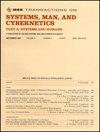Investigating the Flexibility of the MBSE Approach to the Biomass Mission
IEEE Transactions on Systems Man and Cybernetics Part A-Systems and Humans
Pub Date : 2021-11-01
DOI:10.1109/tsmc.2019.2958757
引用次数: 3
Abstract
Model-based systems engineering (MBSE) represents a move away from the traditional approach of document-based systems engineering (DBSE), and is used to promote consistency, communication, clarity, and maintainability within systems engineering projects. MBSE offers approaches that can address issues associated with cost, complexity, and safety. One way that this can be achieved is by performing early functional validation of the high-level spacecraft functional avionics system. The use case discussed in this article focusses on the Biomass model, a systems modeling language-based representation of the Biomass Earth-observation mission. The MBSE approach is used to calculate the required size of the data handling unit onboard the Biomass spacecraft. The functional response of the system in terms of the onboard memory usage throughout the mission is simulated. Traditionally, this level of analysis would not be available at this early stage. The approach aims to replace ad hoc, spreadsheet-based calculations with a formal representation of the system that can be executed, interrogated and quantified. The flexibility of this MBSE approach is demonstrated by applying changes to the Biomass project and assessing the time required to implement these changes in the Biomass model and propagate them through to the results of the simulation. The changes have been made independently of each other and include: changes to the logical architecture, changes to the functional definition, changes to the mission profile, and changes to the requirements. Potential areas for improvement regarding the structure of the Biomass model are highlighted and discussed.研究MBSE方法对生物质任务的灵活性
基于模型的系统工程(MBSE)代表了从基于文档的系统工程(DBSE)的传统方法的转移,并用于促进系统工程项目中的一致性、沟通、清晰度和可维护性。MBSE提供的方法可以解决与成本、复杂性和安全性相关的问题。实现这一目标的一种方法是对高水平航天器功能航空电子系统进行早期功能验证。本文讨论的用例集中在生物质模型上,这是基于生物质地球观测任务的系统建模语言表示。MBSE方法用于计算生物质航天器上数据处理单元所需的尺寸。系统在整个任务中对机载内存使用的功能响应进行了模拟。传统上,这种级别的分析在早期阶段是不可用的。该方法旨在用可执行、查询和量化的系统的正式表示取代临时的、基于电子表格的计算。这种MBSE方法的灵活性通过将更改应用于生物质项目和评估在生物质模型中实施这些更改并将其传播到模拟结果所需的时间来证明。这些更改是相互独立地进行的,包括:对逻辑架构的更改、对功能定义的更改、对任务概要的更改以及对需求的更改。关于生物质模型结构的潜在改进领域被强调和讨论。
本文章由计算机程序翻译,如有差异,请以英文原文为准。
求助全文
约1分钟内获得全文
求助全文
来源期刊
自引率
0.00%
发文量
1
审稿时长
6.0 months
期刊介绍:
The scope of the IEEE Transactions on Systems, Man, and Cybernetics: Systems includes the fields of systems engineering. It includes issue formulation, analysis and modeling, decision making, and issue interpretation for any of the systems engineering lifecycle phases associated with the definition, development, and deployment of large systems. In addition, it includes systems management, systems engineering processes, and a variety of systems engineering methods such as optimization, modeling and simulation.

 求助内容:
求助内容: 应助结果提醒方式:
应助结果提醒方式:


